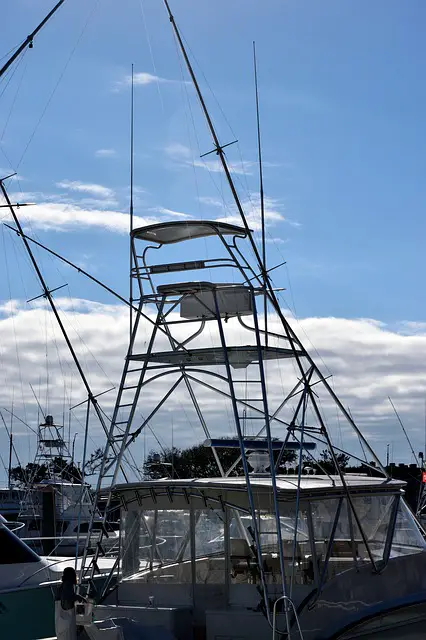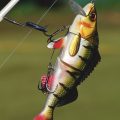
There is just something about mahi-mahi that inspires many offshore anglers to purchase all sorts of mahi-mahi rigs, rods, and reels, hooks, lures, baits, gaffs and fishing lines in anticipation of the forthcoming season. And for incredibly good reasons: Mahi Mahi is a fish that is rich, comes in different sizes, puts up a huge and sometimes acrobatic fight, commonly attacks in pairs or schools and is absolutely delicious to eat.
Mahi is very popular and it’s frightening to imagine what the industry would look like if the species ceased to exist. There are many fishing rigs in the market, but you cannot use standard fishing rigs to catch Mahi. The following five fishing rigs rank among the most potent mahi-mahi catchers.
Large and Horse Ballyhoo
The best thing about using the Large and Horse Ballyhoo rig is that its big baits expel all the small fish. You understand the drill: School mahi-mahi blitz a range of smaller baits and lures, and all the fishing lines go down. Once the fish gets boated, the fishing boat moves along, and the fishing lines go back out to hook up with more schools, which means you will ultimately spend more time dealing with the small fish. School mahi-mahi is usually intimidated by big baits. Apart from possibly pecking, they will also leave the larger baits. And this soak time drastically increases the chances of attracting larger mahi-mahi, which have no issues consuming big baits.
Pitch Bait
Among the deadliest techniques for big Mahi is keeping close a 20-pound-class spinning unit rigged using a large to medium ballyhoo. If a large Mahi appears on the periphery of smaller fish, under working birds or the debris, slowly troll it or immediately pitch your ballyhoo around the birds on a capture course with the fish. Once a fish strikes, free-spool your bait, allow the Mahi to swallow it, and engage the drag later.
The ballyhoo is usually attached by running the point of the hook beneath and out of its jaws. The other option for dropping down or casting distance to deep fish is to spear the ballyhoo on a 4- or 3-ounce yellow buck-tail jig.
Weedless Ballyhoo
Most anglers tire very fast picking weeds off their fishing baits in regions with heavily dispersed sargassum and often set off in search of clean waters. But those who know this stick it out, particularly if the bait abounds beneath the grass mats.
When it comes to such situations, you can deploy a weedless ballyhoo spread, which is rigged in the same way as the large ballyhoo rigs outlined previously. Generally, the main difference between the two is that the point of the hook is inverted back in the bait. This way it will not snag any weeds, and the wire tag that sticks through the bill of the bait is then reversed such that it points downwards into the bait. Therefore, the fishing bait is rigged just like the plastic bass worm.
If you want to rig it, just run the point of the hook through the gill slit of the ballyhoo and instantly out its throat. Next, pull a good part of your hook shank through, and reverse the point of the hook and insert it back into your bait. When you place the hook where it is not binding, make sure that you push your pin rig through the two jaws of your bait and secure the hook and bait using a string of Monel wire.
Live Weed-Line Baits
When a full moon or angling pressure keeps Mahi from feeding, you can try utilizing their natural forage. Utilize a bait quill to acquire some banded rudderfish as well as other small specimens which cling tightly to debris and weeds. These consist of the natural forage of dolphins and most often produce when the “import” baits, like sardines and pilchards, fall short.
Drop all these baits in a five-gallon container of seawater to keep all of them ready. You can then impale one of them on a 3/0 or 2/0 live-bait-style hook that’s fitted to a light, 8-pound-class spinning outfit, and a 20-pound-test fluorocarbon head. The light outfit clips the bait at a fair distance and its light hardware allows it to swim enticingly.
Dredges
A dredge assists in creating the impression of a bait ball immersed in the water column. Dredges complement a surface luring arrangement of a large hookless lure and a spreader bar. The sight of two fish stripteaser dredges uncurling in the water is incredibly exciting. They are fished just deep enough and far enough back that you can still see them and also react to the fish that pulls in on them. You can have mahi-mahi as big as 40 pounds enter in these dredges. Interestingly enough, these dredges work pretty equally as well when you are catching school fish and shut down. Ensure that you cleat them tightly to the transom, where they will flutter and also reflect light underneath the boat.
Flutter-Style Jig
The other technique for pulling up Mahi is dropping a flutter-style iron around 100 feet deep and radically springing it back to the surface. The flutter-style jig is rigged using 4 feet of 50-pound fluorocarbon lead and then joined to a short Bimini twist in a fishing line using a barrel swivel. It can be dropped underneath debris or a weed line or fan-cast just around the fishing boat and then allow it to sink. It comes with good color options including blue-and-silver, pink-and-white, and green-and-orange.
Conclusion
There are many mahi-mahi rigs and lures available on the market. The main reason for having great Mahi lures handy is to hook the first Mahi and then bring the school near to the fishing boat and then pitch your baits to them. The Mahi lures discussed above swim and dance well in the waters and attract Mahi from all directions. If there are any Mahi around, they’ll find these baits and hit them. Always use the lures in different colors to know what the Mahi Mahi like that day. All these lures come with their leaders, so you only need to have a snap swivel ready on your trolling rods to interchange them whenever you want to try or use a different one.










